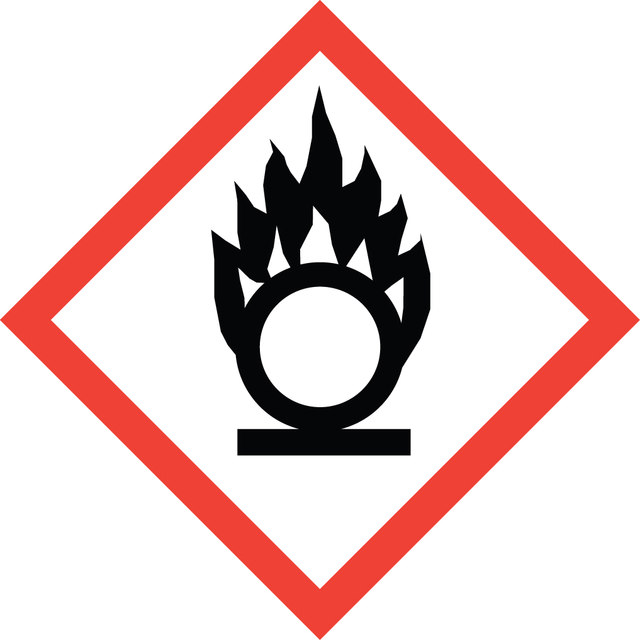等级
anhydrous
battery grade
质量水平
方案
≥99.9% trace metals basis
表单
powder
反应适用性
core: lithium
环保替代产品特性
Design for Energy Efficiency
Learn more about the Principles of Green Chemistry.
sustainability
Greener Alternative Product
杂质
≤0.5 wt. % H2O
≤1000 ppm (trace metals analysis)
mp
264 °C (lit.)
溶解性
H2O: soluble (highly soluble(lit.))
acetone: soluble ((lit.))
alcohols: soluble ((lit.))
痕量阴离子
chloride (Cl-): ≤500 ppm
sulfate (SO42-): ≤200 ppm
应用
battery precursors
catalysts
material synthesis precursor
环保替代产品分类
SMILES字符串
[Li+].[O-][N+]([O-])=O
InChI
1S/Li.NO3/c;2-1(3)4/q+1;-1
InChI key
IIPYXGDZVMZOAP-UHFFFAOYSA-N
正在寻找类似产品? 访问 产品对比指南
一般描述
Anhydrous lithium nitrate is a white, crystalline salt. The anhydrous form is hygroscopic and deliquescent. The salt is soluble in water, ethanol, methanol, pyridine, ammonia, and acetone. Like some other metal nitrates, lithium nitrate has a low melting point of only 264 °C, and decomposes above 600 °C. Because of its low melting point, it is used to produce low-melting fused-salt mixtures in ceramics and heat-exchange media.
Lithium nitrate is produced by the acid-base reaction between nitric acid and lithium carbonate, which evolves carbon dioxide and water. The resulting material is dried, purified, and heated to form the anhydrous product.
Lithium nitrate is produced by the acid-base reaction between nitric acid and lithium carbonate, which evolves carbon dioxide and water. The resulting material is dried, purified, and heated to form the anhydrous product.
We are committed to bringing you Greener Alternative Products, which adhere to one or more of The 12 Principles of Greener Chemistry. This product has been enhanced for energy efficiency. Click here for more information.
应用
Researchers and manufacturers use lithium nitrate in the preparation of many lithium compounds, most notably lithium nickel oxide (LiNiO2) and lithium manganese oxide (LiMn2O4). One common strategy for synthesizing these lithium metal oxides involves a high-temperature reaction of lithium nitrate with a metal carbonate, like nickel carbonate, or with a metal oxide, like manganese oxide. At temperatures above 650 °C, lithium nitrate evolves oxygen gas and nitrogen dioxide gas and decomposes through a complex process into lithium oxide, which reacts with the metal precursors to form the tertiary or quaternary lithium metal oxides. Researchers have used this technique to prepare exciting new materials, like LiAl0.25Ni0.75O2 as a cathode material in lithium-ion batteries and LiGa5O8 as a phosphor for optical information storage.
Because lithium nitrate is soluble in water, researchers also use lithium nitrate in the synthesis of lithium compounds using a host of solution-based chemistries. For example, microwave-induced combustion using solutions of lithium nitrate has yielded olivine-type lithium iron phosphate (LiFePO4), lithium cobalt oxide (LiCoO2), and lithium titanium oxides (ex. Li4Ti5O12 and Li2TiO3). Hydrothermal processing, sol-gel processing, spray pyrolysis, co-precipitation pre-processing, and Li emulsion-drying methods have all used lithium nitrate as a reactant to form lithium metal oxides. These techniques can yield controlled particle size, grain size, crystallinity, or facilitate the introduction of dopants for engineering the properties of the products, often explored for next-generation lithium-ion batteries.
Our battery grade lithium nitrate with ≥99.9% trace metals purity and low chloride and sulfate impurities, is designed as a precursor for cathode materials for lithium-ion batteries.
Because lithium nitrate is soluble in water, researchers also use lithium nitrate in the synthesis of lithium compounds using a host of solution-based chemistries. For example, microwave-induced combustion using solutions of lithium nitrate has yielded olivine-type lithium iron phosphate (LiFePO4), lithium cobalt oxide (LiCoO2), and lithium titanium oxides (ex. Li4Ti5O12 and Li2TiO3). Hydrothermal processing, sol-gel processing, spray pyrolysis, co-precipitation pre-processing, and Li emulsion-drying methods have all used lithium nitrate as a reactant to form lithium metal oxides. These techniques can yield controlled particle size, grain size, crystallinity, or facilitate the introduction of dopants for engineering the properties of the products, often explored for next-generation lithium-ion batteries.
Our battery grade lithium nitrate with ≥99.9% trace metals purity and low chloride and sulfate impurities, is designed as a precursor for cathode materials for lithium-ion batteries.
警示用语:
Warning
危险声明
危险分类
Acute Tox. 4 Oral - Eye Irrit. 2 - Ox. Sol. 3
储存分类代码
5.1B - Oxidizing hazardous materials
WGK
WGK 1
闪点(°F)
Not applicable
闪点(°C)
Not applicable
法规信息
新产品
此项目有
A review of recent developments in the synthesis procedures of lithium iron phosphate powders.
Jugovic D, et al.
Journal of Power Sources, 190, 538-544 (2009)
Synthesis Conditions and Oxygen Stoichiometry Effects on Li Insertion into the Spinel LiMn2O4
Tarascon J M, et al.
Journal of the Electrochemical Society, 141, 1421-1421 (1994)
Synthesis and Characterization of LiAI1/4Ni3/4O2 (R3m) for Lithium-Ion (Shuttlecock) Batteries.
Ohzuku T, et al.
Journal of the Electrochemical Society, 142, 4033-4033 (1995)
Electrochemistry and Structural Chemistry of LiNiO2 (R3m) for 4 Volt Secondary Lithium Cells
Ohzuku T, et al.
Journal of the Electrochemical Society, 140, 1862-1862 (1993)
Feng Liu et al.
Scientific reports, 3, 1554-1554 (2013-03-28)
In conventional photostimulable storage phosphors, the optical information written by x-ray or ultraviolet irradiation is usually read out as a visible photostimulated luminescence (PSL) signal under the stimulation of a low-energy light with appropriate wavelength. Unlike the transient PSL, here
我们的科学家团队拥有各种研究领域经验,包括生命科学、材料科学、化学合成、色谱、分析及许多其他领域.
联系客户支持
